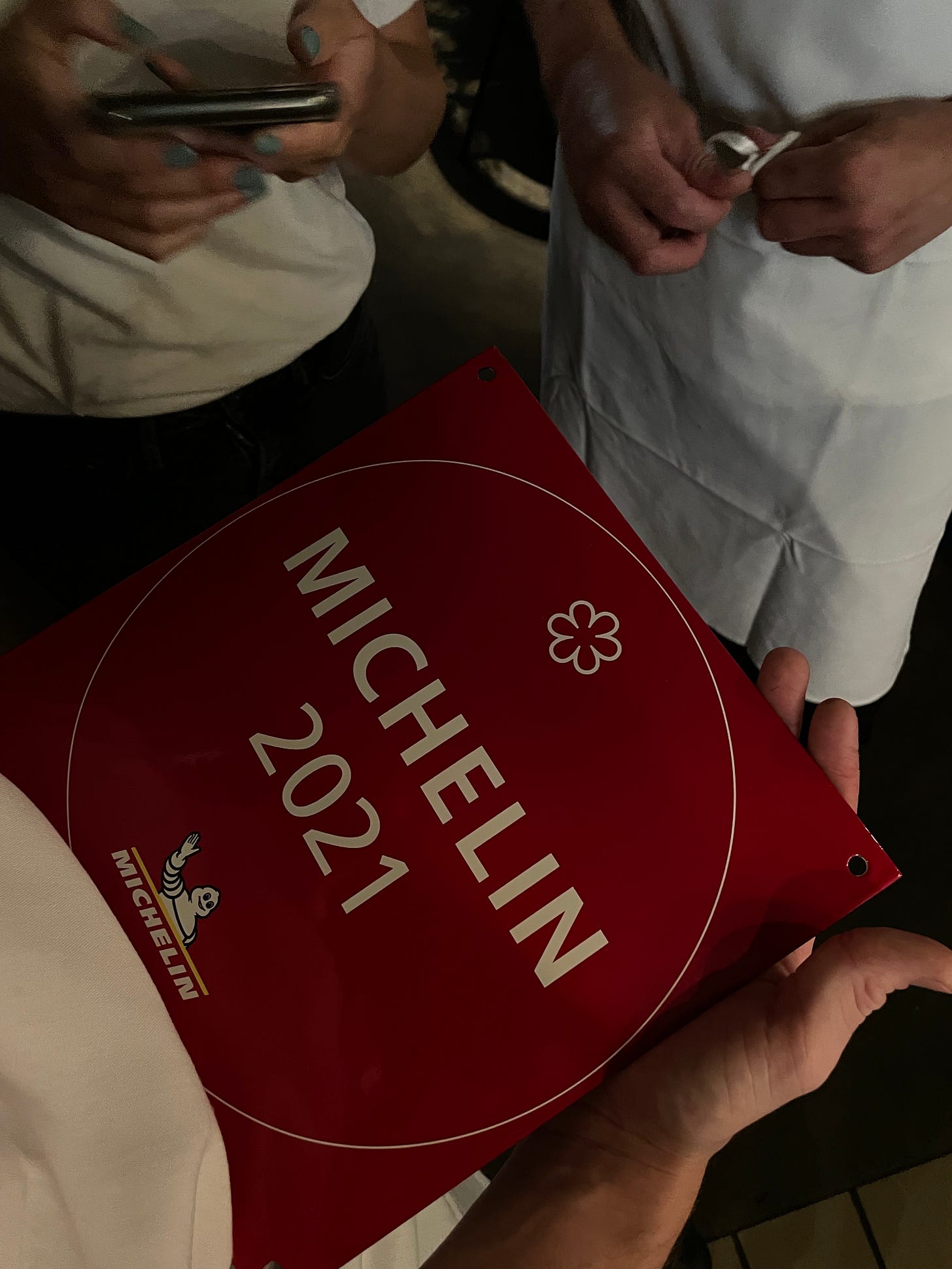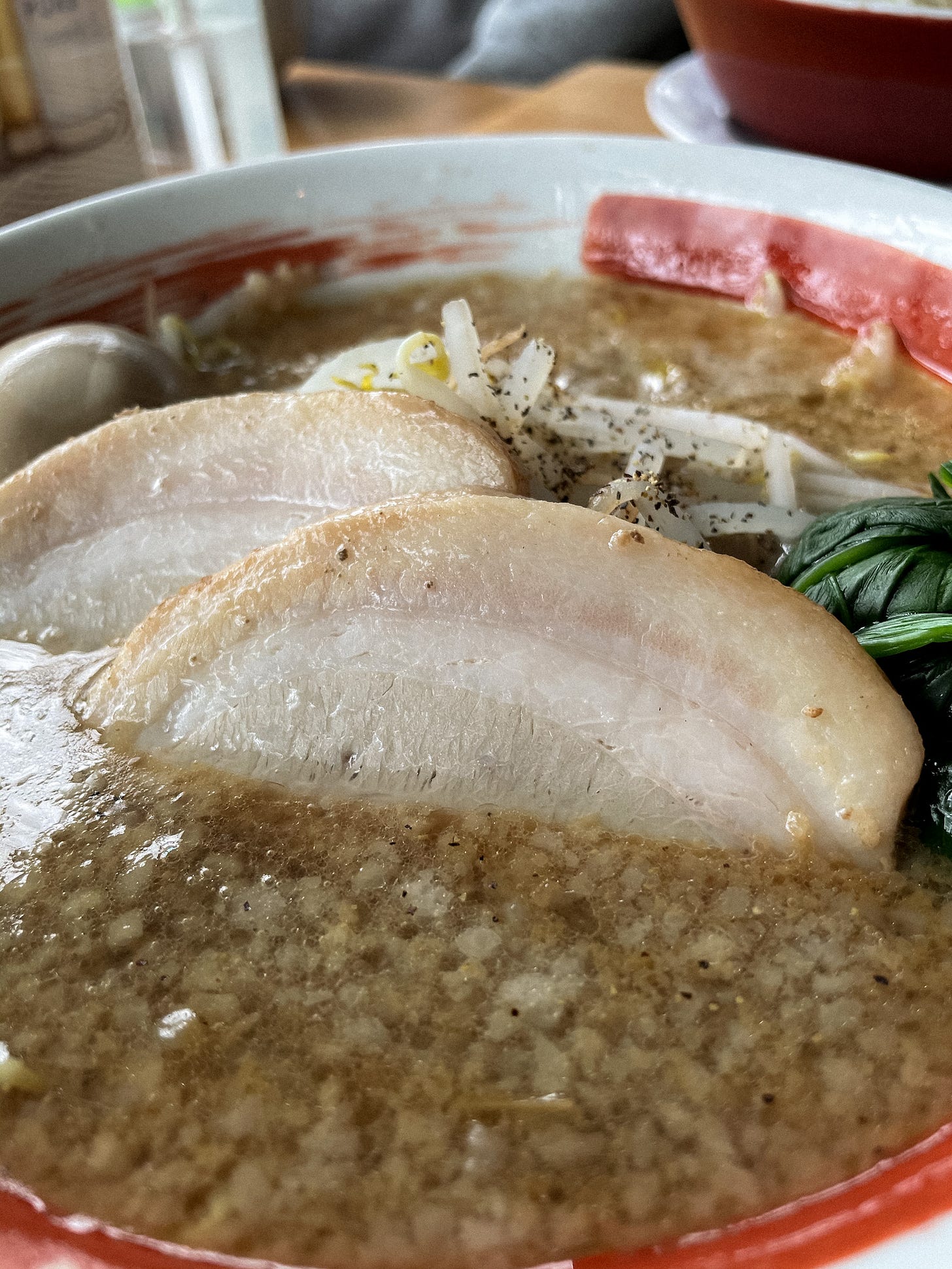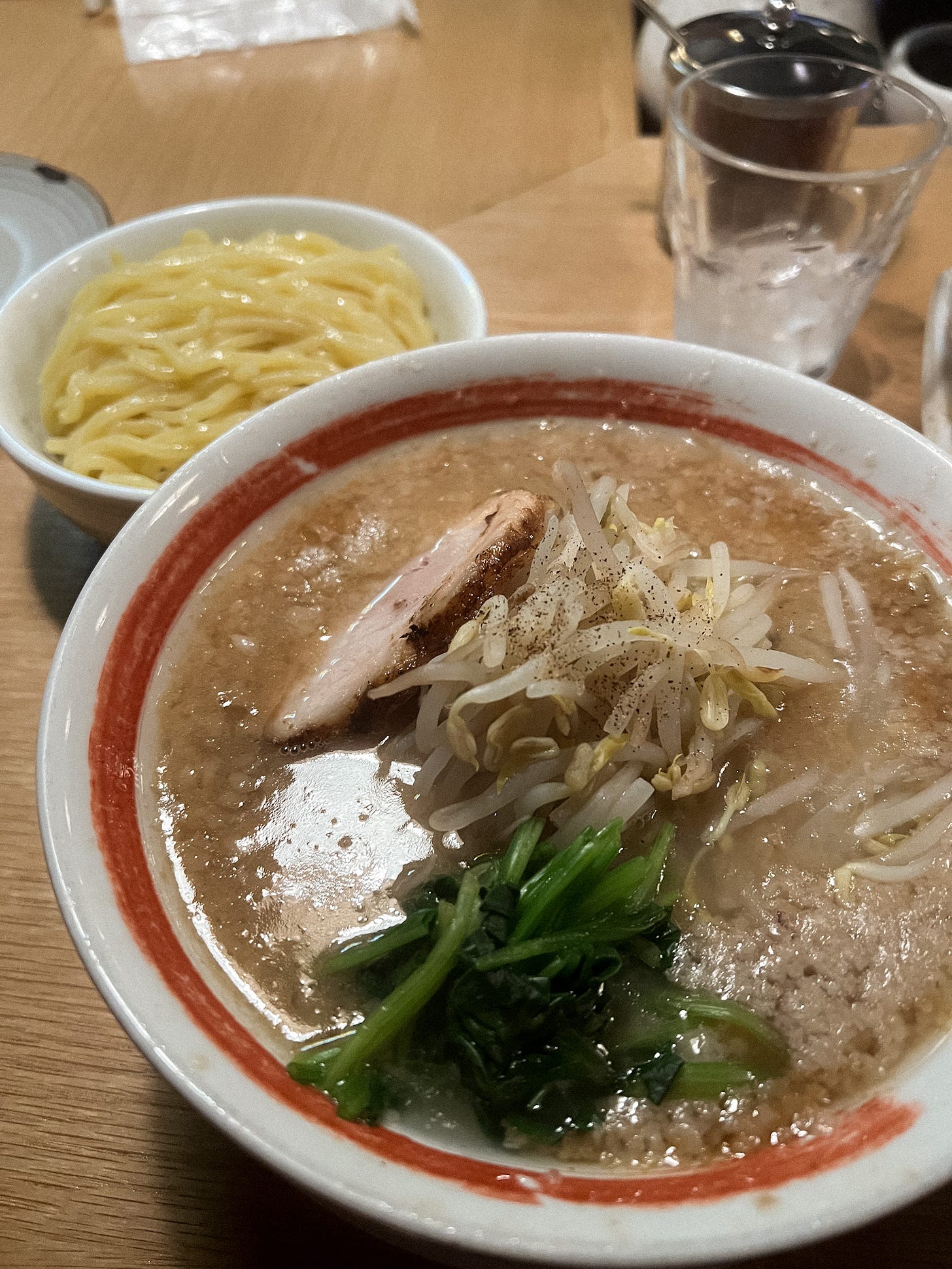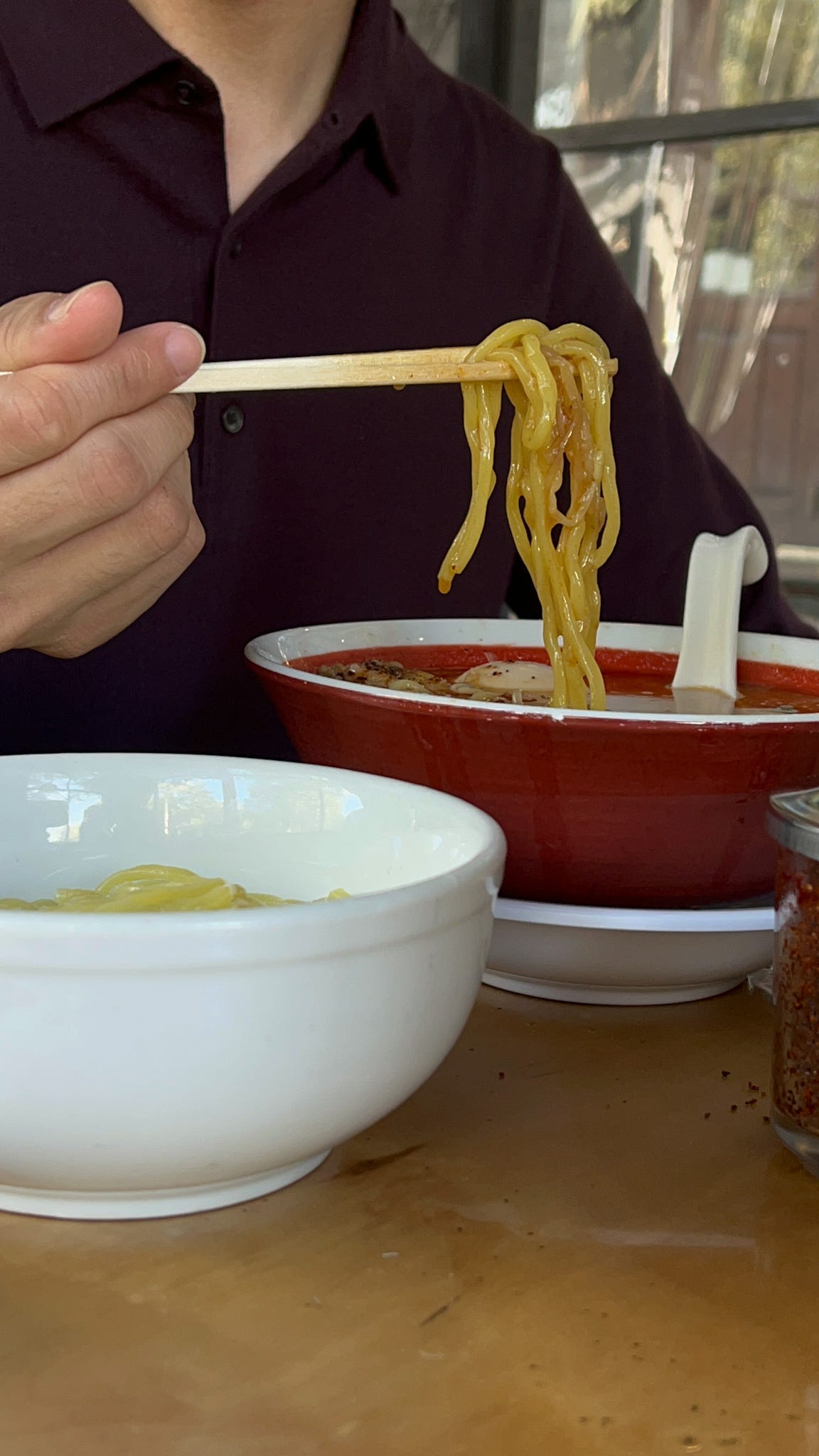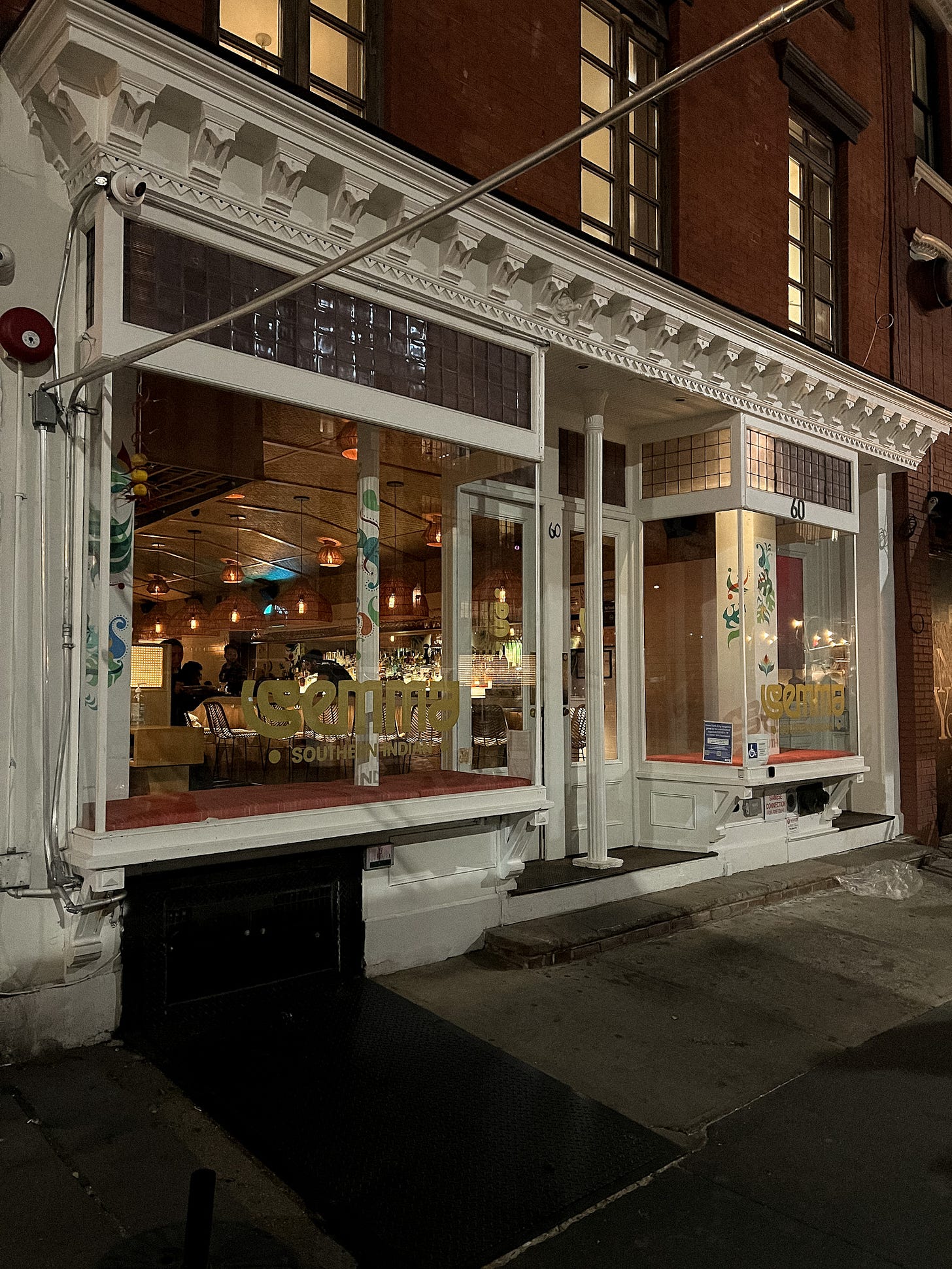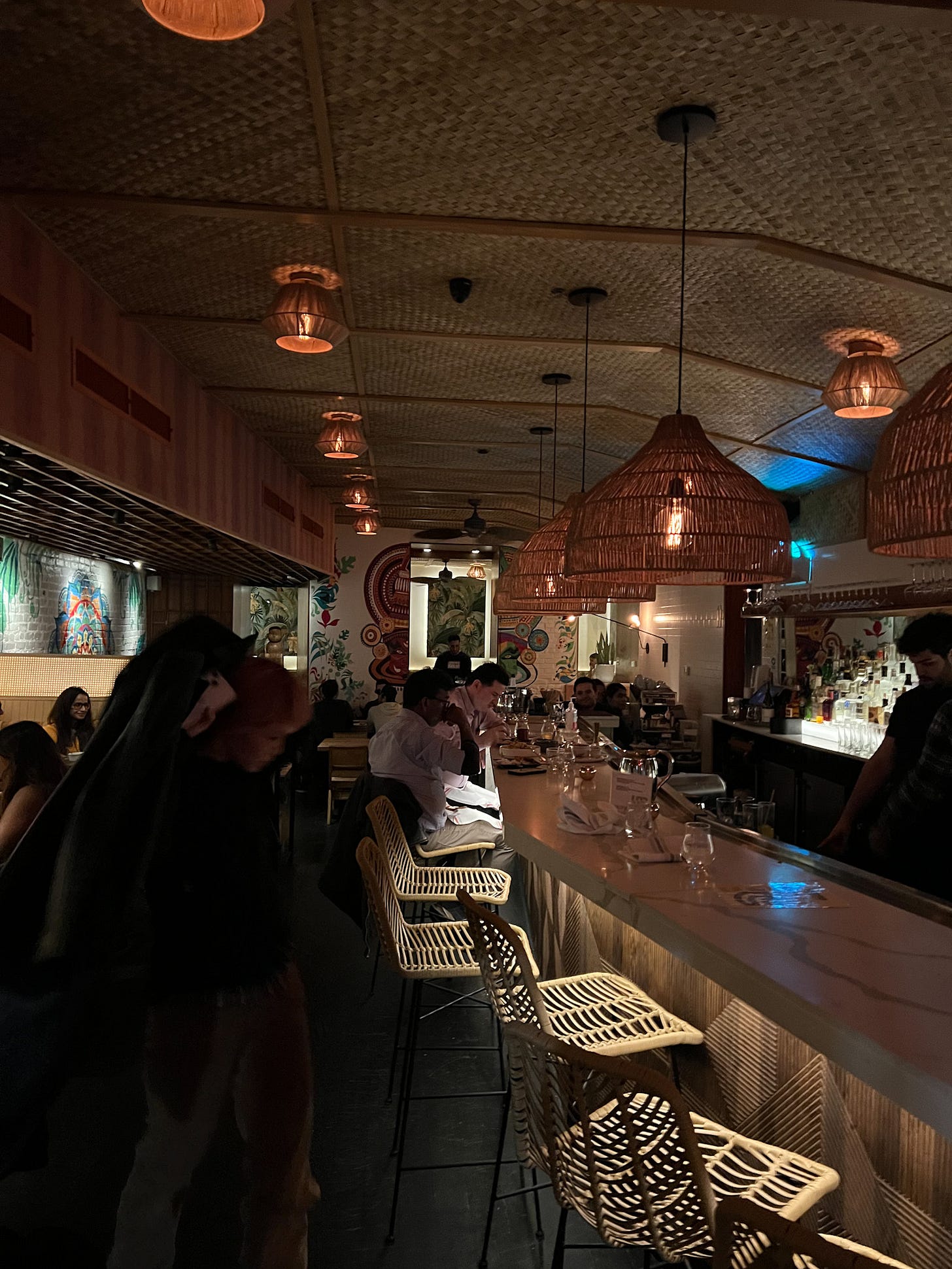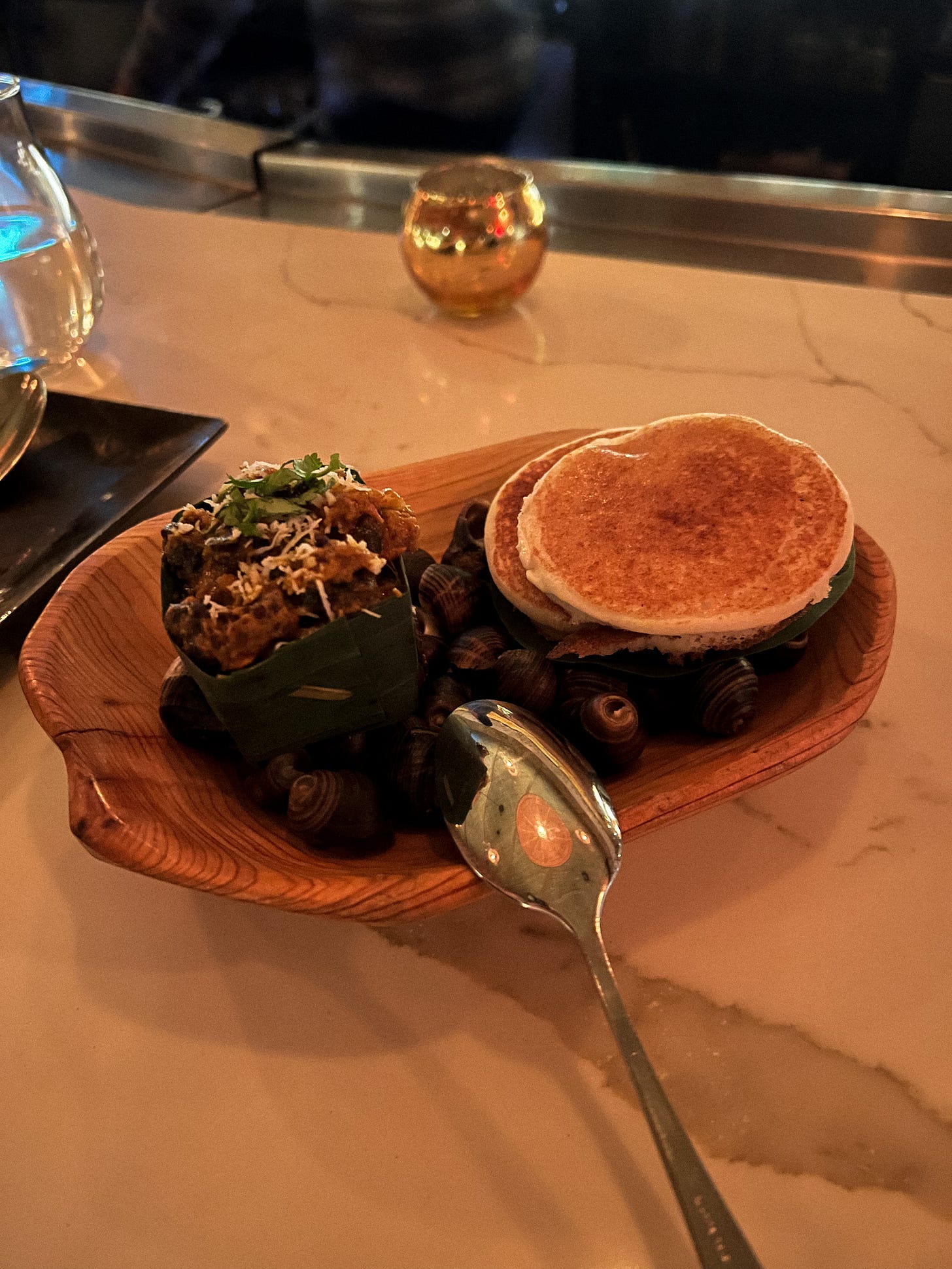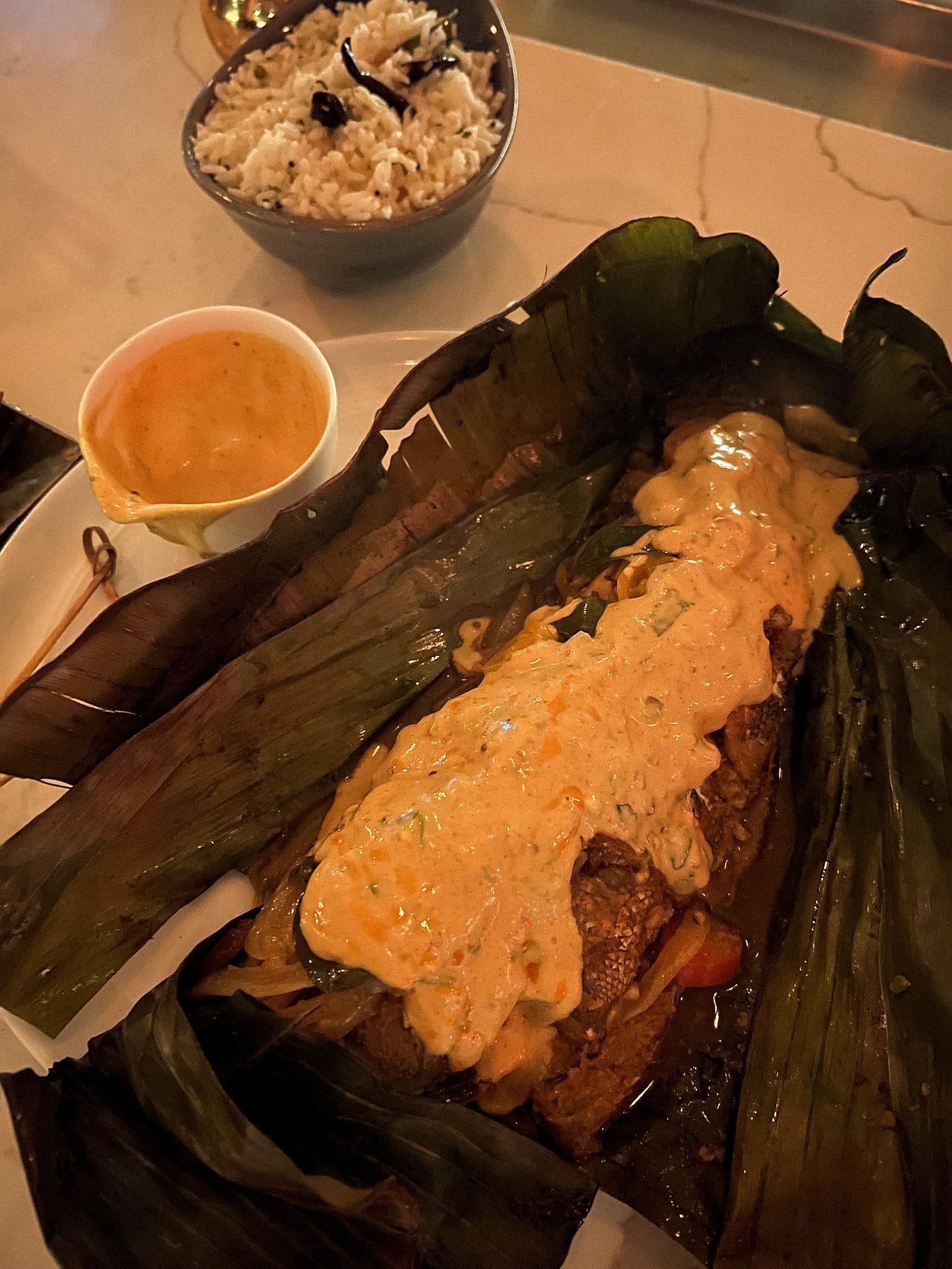This week is the 6th week of doing this newsletter and I have been deliberating about what this Substack is really for and about. Is this a platform for mostly restaurant reviews and recommendations? Is it a space to shed light on issues that restaurants struggle with? Is it a long-form portfolio so that I can get a job at a food media company (hit me back Vice)? Or is it just a blog where I can just dump all the things that are in my head when I think about food and restaurants? I thought as each week progressed I would have a stronger idea, but the more I write, the more I realize it’s not as simple as that for me.
Personally, I don’t care for critical restaurant reviews. I don’t care what someone, especially someone who I don’t know, has to say about their opinion about a restaurant. Sure, someone like Pete Wells, a restaurant critic for the New York Times since 2011, is knowledgeable about food and has eaten at more restaurants than most of us combined. He’s a great writer and a respected critic… but I don’t know the guy. I don’t know his relationship with food. I don’t know if he’s a dick or a good guy IRL. I don’t know if he’s just another white guy with a… fetish for Asian… culture...
I don’t have a vendetta against Wells or any other food critics. I just don’t care for their opinions about food anymore. I remember religiously reading the NYTimes restaurant reviews, the Michelin yearly star drops, The James Beard awards, Bon Appetit’s best new restaurant releases, and Eater’s hottest new restaurant lists with a sense of reverence and respect. But these institutions seem to stray farther and farther off course over time, especially since the pandemic started.
Do restaurants need to hear from a critic that service wasn’t as tight as it should be? Or that the food wasn’t impressive or creative enough? Do restaurants need an outsider looking in to critique whether or not people should bother going in, especially while many establishments are still struggling with labor issues, rising food costs, and the pandemic? Do we REALLY need to talk about your critical opinion of food that looks like “poop swoops” Eater? Do we REALLY want to read and watch through the insufferable and hollow attempts at trying to prove to us that you are indeed a BIPOC-supportive, progressive, and edgy media company and not just another top-down predominantly white corporate entity that is just quickly hiring as many BIPOC cooks and writers as possible to remain relevant after the 2020 fallout? Is food media contributing to the culture and pushing the boundaries anymore?
I could be wrong, I probably am wrong and in the minority. I’m sure millions of people are eating up this content and clicking away at all the SEO-bait that these articles are littered with. I’m sure people love restaurant review drops and are secretly hoping for another scathing review that is fun to read. I’m sure they’re all doing just fine. I just don’t care anymore and most of my friends don’t anymore either.
I am all for the steady decline of the once seemingly autocratic grasp that food critics like Wells had on many chefs, restaurant owners, and readers. I used to hold the Michelin guide, James Beard awards, and the NYTimes reviews on a very high pedestal. These guides and reviews once felt like scrolls brought down by lil cherubs from the food media gods - dictating where we should eat and also influencing us about how to feel about spaces before we even get there. Now it seems like people, like myself, are realizing that the Michelin guide and Beard Awards are not as objective as we once thought… but actually deeply influenced by PR firms and sponsorships. Aka. Money money money. More eloquently put, these groups have become a circle-jerk popularity contest that has gotten so big that they’ve lost touch with the high call of elevating excellent restaurants to patrons who are on the lookout for their next great meal.
Sure the New York Times stopped giving out stars during the pandemic since they saw the realities of what restaurants were facing. Restaurants still have to respect the power dynamic that has been instilled. A good review garners more publicity more seats filled, and more respect - a signal to the chef and staff that their hard work is being seen. I personally think the stars rating system doesn’t need to come back. It feels dated and subjective. Wells can have an incredible review for a hot new Asian American restaurant, where I can feel like the restaurant is holding back punches and pandering to a demographic that has a very different palate to mine.
The stars will surely be back one day, the Michelin guide will continue their award ceremonies, and the status quo will continue to be pushed by these larger media conglomerates and PR firms. And as long as they do, I know (and hope) there will be small pockets of IG accounts, other forms of independent media, and substacks like this one will continue to carry on, hopefully adding a little more nuance and perspective to the scene for those who are looking for that.
I will not give stars. Frankly, I don’t have any desire to write a critical review. If a meal wasn’t seasoned properly, if service was sloppy, and/or if I didn’t enjoy the meal(s) I just won’t write about it. I will shit on bigger groups like the guides, media conglomerates all day, and the surrounding systems that are perpetuating problematic issues for restaurants and patrons.
But I’ve worked in services where I knew the food wasn’t on point no matter how hard I tried. I’ve cooked meals that just were not good. I’ve been exhausted and burnt out at my jobs before. Sometimes the dishwasher is a no-show, the sabayon overcooks and fucks up the ISI canister, the deli of perfectly minced shallots gets knocked onto the floor, and that one server wants to talk about their upcoming vacation for a moment too long while you’re scrambling to get ready for service while trying not to lose your shit. A sharp review or harsh IG post at the end of the shift from someone who thinks their opinion is important would push me over the edge.
I just want to continue to share meals that I genuinely enjoyed, the places that my friends run that you should support, and thoughts about issues that will hopefully make you a more thoughtful, mindful, and empathetic eater - if you already aren’t. At the end of the day, it’s all just food, isn’t it?
With all that said, I want to share two restaurants this week. The first is one that I frequent and have grown very fond of. The second is one I tried for the first time this week, which you really need to try as well.
Tabetomo
I never got into the ramen craze that swept up the States in early 2010s'. I’ve never been crazy about ramen and I rarely crave it. But Tabetomo though?… I love this place. If every ramen shop was as perfect as this one, I would be a devout ramen head. If I had ramen like this in my earlier years as a cook, I would have moved to Japan and given Ivan Orkin a run for his money as the most elite gaijin ramen chef (not saying that he is at all, just the first non-Japanese guy who I can think of that makes ramen lol).
Tabetomo is in the East Village, on Avenue A across from the park. The first time I went there it was pretty unassuming. It’s got the standard Japanese ramen shop starter pack. A long wooden bar full of patrons. A window that peeps into the kitchen to see massive stock pots of steaming broths. And a team of Japanese men in their bandanas, shaking off the excess water from the noodles onto the ground and garnishing bowls with their large chopsticks. Stare long enough into the kitchen to catch the eyes of one of the cooks to get a quick smirk and nod.
Their menu is straightforward as well. They’re known for their tsukemen ramen, which roughly translates to “dipping noodles”. They also have normal tonkotsu ramen, great vegetarian ramen, an assortment of donburi rice bowls, and Japanese side dishes. At the end of the day, tsukemen ramen is truly the superior way to eat ramen.
Tsukemen ramen comes out in two parts. The tonkotsu pork broth that comes out is piping hot and the noodles are served at room temp on the side. The broth is cooked for 60 hours, reduced, and seasoned heavily so that when you dip your noodles into the broth for every bite the noodles catch just the right amount of broth and seasoning. Tabetomo serves their broth with a generous heap of steamed bean sprouts, blanched spinach, grated daikon, garlic, and a couple of slices of fatty and tender chashu. The chefs top the broth with an ample amount of pork fat that glimmers in the light - a very necessary element that helps all the flavor gloss over the noodles.
The ramen noodles tend to be thicker, in between udon-thickness and the standard thinner ramen noodles. The thicker noodles provide more surface area for the broth to cover for each bite. The dense noodles have a spring to them that offsets each other to create the ideal noodle mouth feel. I’ve been probably 5-6 times now and the noodles are always perfectly cooked. Leave it to the Japanese to master noodle making.
It’s a very generous and heavy meal. Don’t go expecting a clean broth that will leave you feeling sufficiently full. It’s a salt and umami bomb that will leave you in a coma. I usually go to Tabetomo on Saturday or Sunday for lunch after a long night out. The salt and noodles will bring back life to you exponentially better than any bacon, egg, and cheese could ever.
Pro-tip: instead of intaking your week’s worth of sodium by finishing the broth in one sitting, ask to take the broth home for leftovers. I usually take the leftover broth, add 2-3 cups of water to dilute the broth, and then add whatever vegetables I have lying around at home. Onions, scallions, bean sprouts, eggs, whatever greens, and whatever you have in your fridge. I add either soba noodles or rice on the side to complete the set. We love a gift that keeps giving.
Semma
Semma is an Indian restaurant in the West Village that highlights the colorful food of the southern Indian region. Semma is a part of the Unapologetic Foods restaurant group alongside Dhamaka (LES) and Adda (LIC).
I don’t want to sound like that guy who likes to say something along the lines of “oh I love Japanese food!!! I used to eat so much izakaya food when I was teaching English in Tokyo!!!”… we all know… that guy… but… I did get to spend several months in Southern India… and this meal immediately threw me back.
I remember landing in Vishakhapatnam and fully expected most restaurants to serve butter chicken, palak paneer, and naan - only to be quickly reminded that my 20-year-old American worldview was incredibly smaller than I wanted to admit. I was in Andhra Pradesh the state just north of Tamil Nadu, where Chef Vijay Kumar of Semma is from. Side note: I’m not going to even attempt to act like I know what I am talking about. India and its food are so incredibly nuanced, vast, and with a longer history than the existence of most of the western world. A couple of trips to India does not give me any sort of accreditation to give any critical opinions about the authenticity of the food - all I have is vivid memories of my mind being constantly blown by the crazy flavors that I have never tasted before.
When I grew up in the American South, I didn’t have a wealth of options for Indian food, so I had a very underdeveloped palette and understanding of Indian cuisine. My ignorance of thinking that all of India ate primarily butter chicken and naan is… ignorant but… understandable at best?… but ignorant nonetheless.
Being thrown into a city that was full of fluffy idlis with its accompaniment of chutneys, crispy masala potato-filled dosas, bowls of sambar, mounds of steaming biriyani, tiny bowls of incredibly tart, spicy, and salty pickles, and plates of the spiciest fish curries was the most gracious and generous teaching moment.
Those several months in India were extremely formative and I regularly daydream about going back. My meal at Semma made me realize that I could take a quick train over to remember the flavors, while I save for my next India trip.
This was my first time there and only got a few dishes to try. I wanted to go another time to try a few more of their dishes before I wrote this, but I realized that I already told so many friends about it this week. I didn’t want to wait for another meal here before writing about it. It was a great meal and it sparked an appetite for more Indian food since.
We started with the nathai pirattal - Peconic snails cooked a curry made from ginger and tamarind, served with two kal dosas. The snails were brought in a small banana leaf basket atop a bed of empty shells. I spooned the first bite of the snails onto the kal dosa (think silver-dollar pancakes but with a crunch exterior, fluffy within, savory with hints of fenugreek). After the first bite, I woke up and started getting excited. I had no expectations coming in, I had heard Semma was a solid Indian spot but I didn’t bother digging deeper because I wanted to see for myself. That first bite had me excited for the other dishes.
Our next dish was the gunpowder dosa. It was a large triangle-shaped rice and lentil “crepe” that was stuffed with potato masala, served with a black sambar and two accompanying chutneys. This dosa was nuts. We cut it up and ate it with a knife and fork, but the guy sitting next to us had the same dish and he was properly going in with his fingers while watching soccer on his phone. Not what I expected to see in a bustling West Village spot on a Thursday night, but it was somehow fitting. Every bite was fun. The dosa had crunch, but the potato masala inside was creamy and had a nice spice to it. The sambar and chutneys were dripping all over our plates and the temptation to ditch the silverware hung over me. I could have easily pounded down three more of these.
We finished with their meen pollichathu and a side of coconut rice. A whole black cod, covered in sliced shallots, cherry tomatoes, ginger, and curry leaves, all wrapped in a banana leaf and steamed through. The server brought it over and took her time to gently remove the wooden skewers from the banana leaves. It was a sensual moment that built up anticipation as I blankly stared as the fish revealed itself. Once the fish was presented the server poured a curried coconut sauce all over the fish, a finale I wasn’t expecting but was so ready for. The guy next to us took a moment away from his match to watch the server present the dish and had to ask her what it was before going back to his dosa, again it was a fitting moment.
The fish was perfectly cooked. The flesh was tender and fell away from the bone with ease. I used two spoons to portion the fish onto each other’s plates. It dish probably didn’t even last 10 minutes. We didn’t say much while eating it with the occasional glance at each other with the same look of “damn. what the hell is going on.” The coconut sauce atop the fish added richness to the fish while the cherry tomatoes added a nice pop of tartness.
I asked for the menu after the meal to look over it again and scope out what I had to get next time. Since this meal, I haven’t been able to stop thinking about southern India again. I’ve been asking friends about their favorite Indian spots around the city, especially in Jackson Heights, so I’m sure I’m going to have to write a few posts about these future spots.
If you made it this far, thank you for taking the time to read this week’s newsletter. I will try to post another one soon to cover a couple of wine recommendations… I don’t know how, but I always end up hitting my word/image limit for each week.
Thank you again for subscribing and thank you, especially to those who have become paid subscribers and directly supporting this newsletter! I am working on perks that will be provided for paid subscribers only and I greatly appreciate the support.
If you enjoyed this week’s post, please share this with your friends! I will have an IG post that you can share with your friends once this sends out. <3
With gratitude,
Edmond





